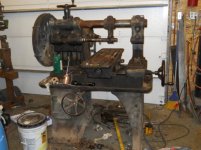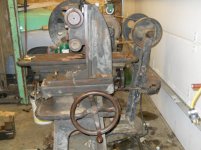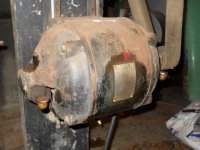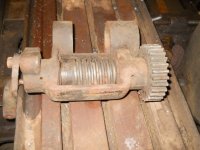Deereahuler
Aluminum
- Joined
- May 27, 2013
- Location
- McCook, NE


I recently 'fell' into a deal for a lathe and milling machine. I found these machines on Craigslist about 70 miles from my home. I have done a little cleaning and testing on both machines, with the mill working 'right out of the box'. The lathe needs some work, but it will function well enough to build the pieces it needs to be correctly repaired.
I suspect the mill was built around 1900 or so. I searched the net and found some pictures of the same mill that a guy restored. Sadly, somewhere along the line someone removed the power feed for the table. I am not terribly interested in restoring this machine to factory original--I just want it to be functional.
The major components of the lathe are in good shape. Due to an error on my part, I will get to teach myself how to make gears. When doing some preliminary oiling, I noticed that the stud gear was missing for the screw drive feed. I finished oiling things and had the machine freed up after sitting idle for 10 years. It turned over nicely by hand. Foolishly, I powered up the electric motor after engaged the transmission in first gear. I had the back gears engaged and I was pleased at how smooth the lathe ran and that there seemed to be no odd noises or vibrations. The chuck just crawled along and I was pleased. I then noticed that the shaft where the stud gear mounts was not turning. I shut off the motor and while the lathe was coasting to a stop, I started turning that shaft. The lower gear had a couple teeth missing and after a terrible crunch the upper drive gear on the headstock now has about 5 teeth destroyed.

Now for a few questions:
Where are the serial numbers for the lathe and the mill located? I have looked high and low and cannot find them anywhere. I suspect the S/N for the lathe might be under the base for the motor/transmission mount, but I'd like to be sure before I go to the trouble of removing this heavy assembly just to find the number. I thing the mill is supposed to have a brass tag on the boss that houses the overhanging tube. There are two sheared brass rivets on the boss, but no tag exists there now.
I have been a mechanic/technician professionally for the last 20 years. I have always wanted to learn to operate a lathe, so now I get a chance. The milling machine is an added bonus.
Thank you in advance for any suggestions/help/advice you can offer















